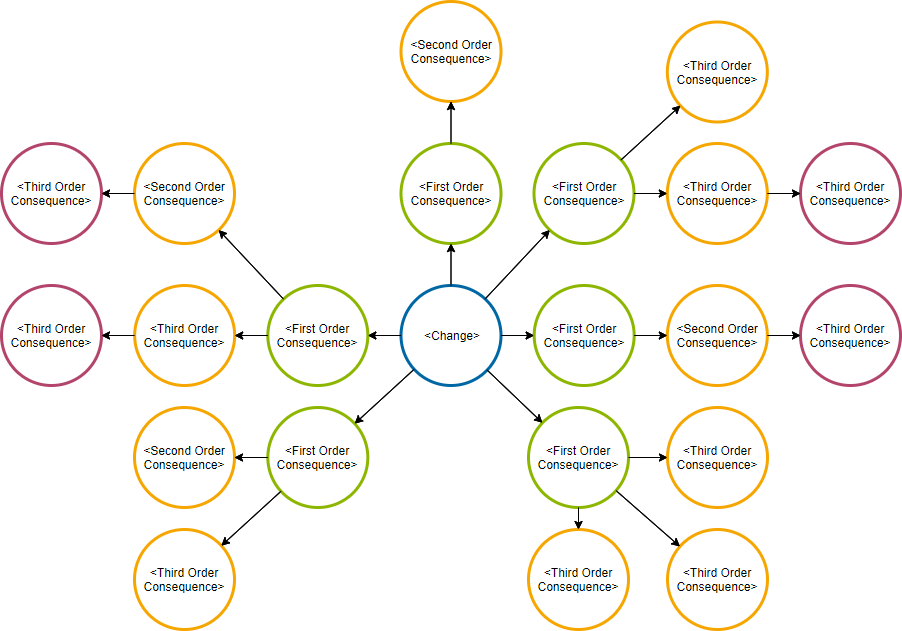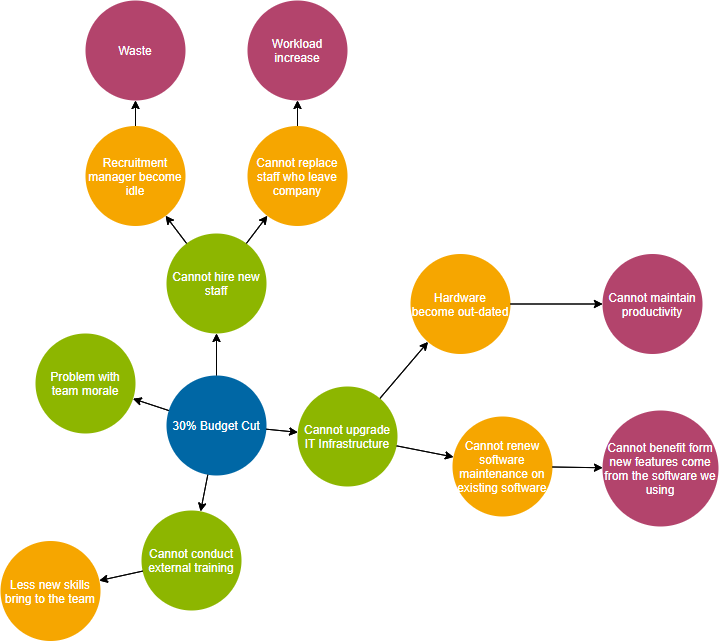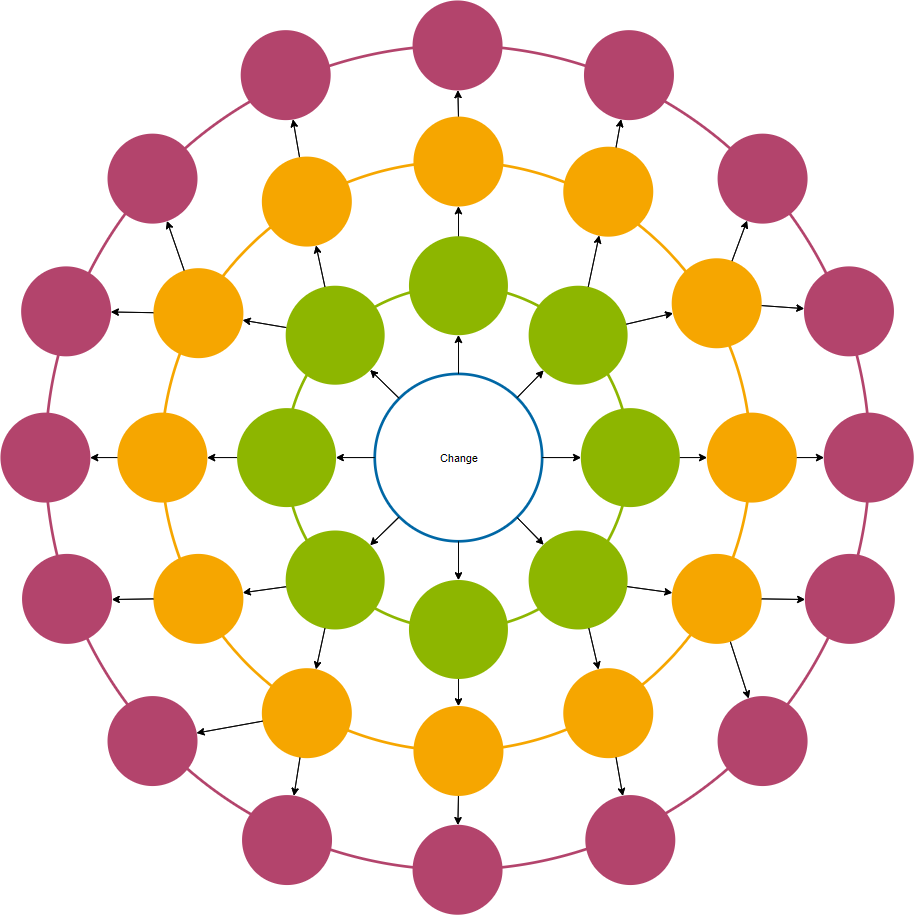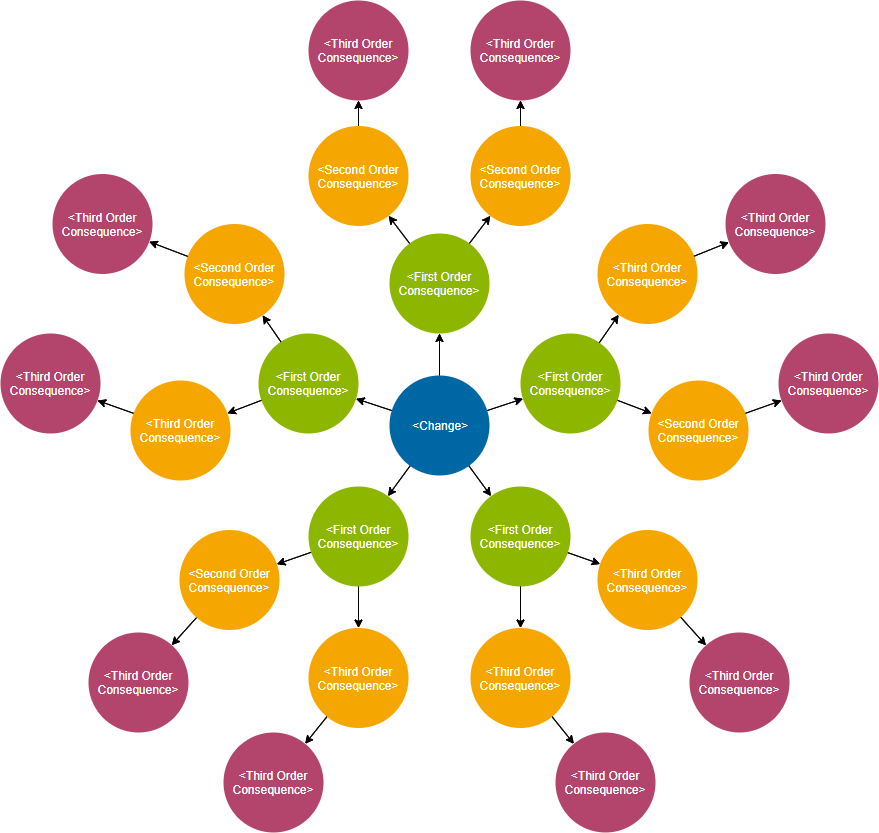The Futures Wheel is a way of organizing thinking and questioning about the future invented by Jerome C. Glenn in 1971. It is a foresight method that provides a model of the future based on the consequences of an event or trend for obtaining a deeper understanding of the problem domain being analyzed, so that the generated future model may be as accurate as possible.
The futures wheel organizes thoughts about future development or trend and put down in a structured way. The use of interconnecting lines makes it possible to visualize interrelationships of the causes and resulting changes. Thus, Futures wheels can assist in developing multi-concepts about possible future development by offering a futures-conscious perspective and aiding in group brainstorming.

Edit this Futures Wheel Template
How to Develop Futures Wheel?
- To start a futures wheel the central term describing the change to evaluate is positioned in the center of the page (or drawing area).
- Then, events or consequences following directly from that development are positioned around it.
- Next, the (indirect) consequences of the direct consequences are positioned around the first level consequences.
- The terms may be connected as nodes in a tree (or even a web). The levels will often be marked by concentric circles.
Looking for Futures Wheel Online Tool?
The best way to understand the Futures Wheel is to look at some examples of Futures Wheel and start drawing your own. You can now modify the Futures Wheel example below using Visual Paradigm’s online Futures Wheel tool.

Edit this Futures Wheel Diagram

Edit this Futures Wheel Template
